This blog covers day 3 at the CEDIA Expo 2014 show in Denver, CO. Included is some follow-up information from what was posted in the Day-2 report as well and info from a few more manufacturers that are exhibiting at CEDIA Expo 2014
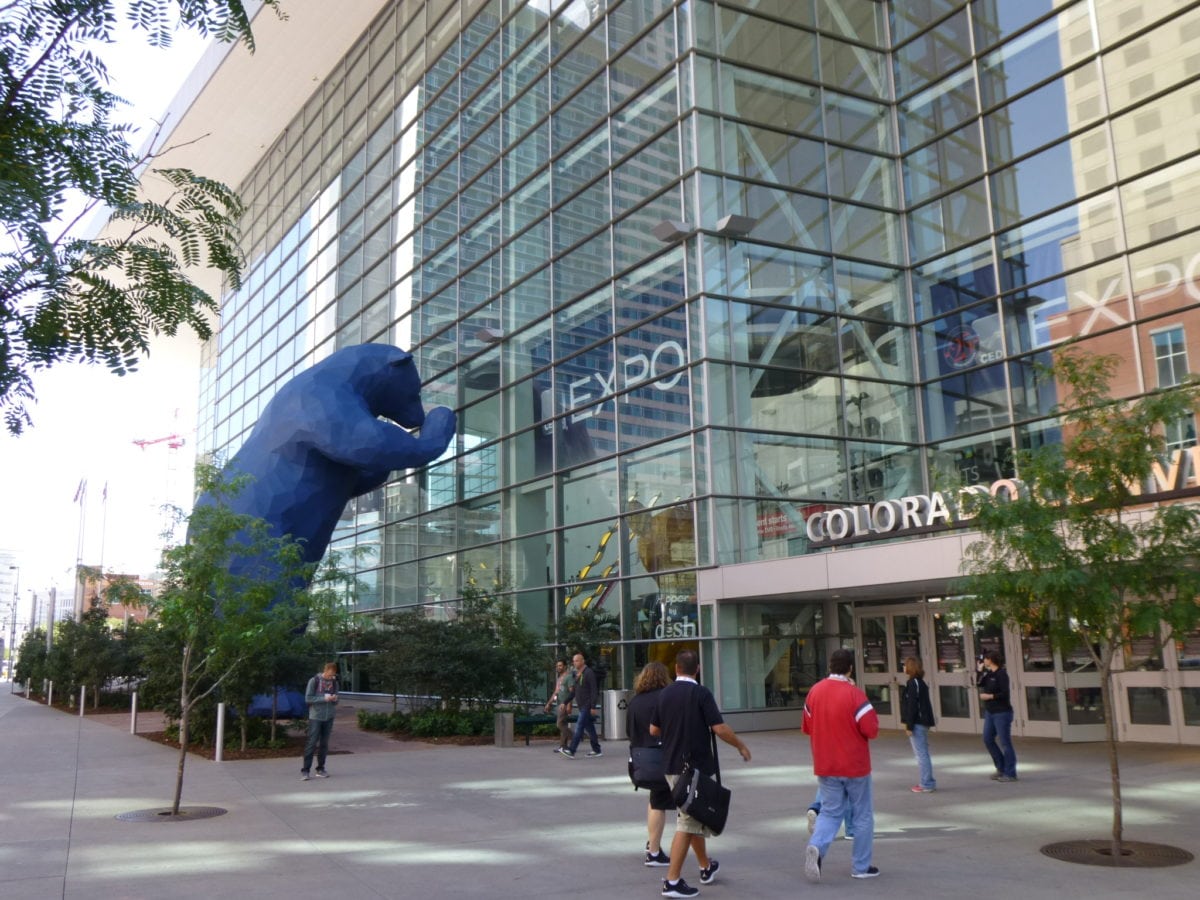 This blog includes a few post show updates from Sept. 15 and 18, 2014.
Epson -
This blog includes a few post show updates from Sept. 15 and 18, 2014.
Epson -
I posted extensive info about Epson's new Pro Cinema LS10000 in both the Day-1 and Day-2 reports and stopped by their booth again this morning to get answers for a few more of the questions I had. The official US pricing has not yet been announced for either the LS10000 or the LS9600. The only information they can release is "Under $8,000" (for both models). Clearly the LS9600 will be quite a bit lower in price than the LS10000. Both projectors come in virtually identical flat black cabinets but the LS9600 lacks the "4K Enhancement" feature, omitting 4K/UHD signal input capability, found on the LS10000. The LS9600 does include a wireless HDMI connection capability in addition to the regular HDMI inputs. Also the LS9600's preliminary specs have its light output at 1300 lumens vs. 1500 for the LS10000. However, this may change by the time the production projectors are ready to being shipping, which is perhaps as soon as the end of October. Pricing is expected to be available within the next few weeks. The Epson rep. I spoke to acknowledged there seems to be some issues with the demo material (or perhaps setup) being used at CEDIA for the LS10000 demo. That's something they will need to investigate once back at Epson offices in California. The first photo below is of the rear panel of the LS9600 with the rear cable recover removed.
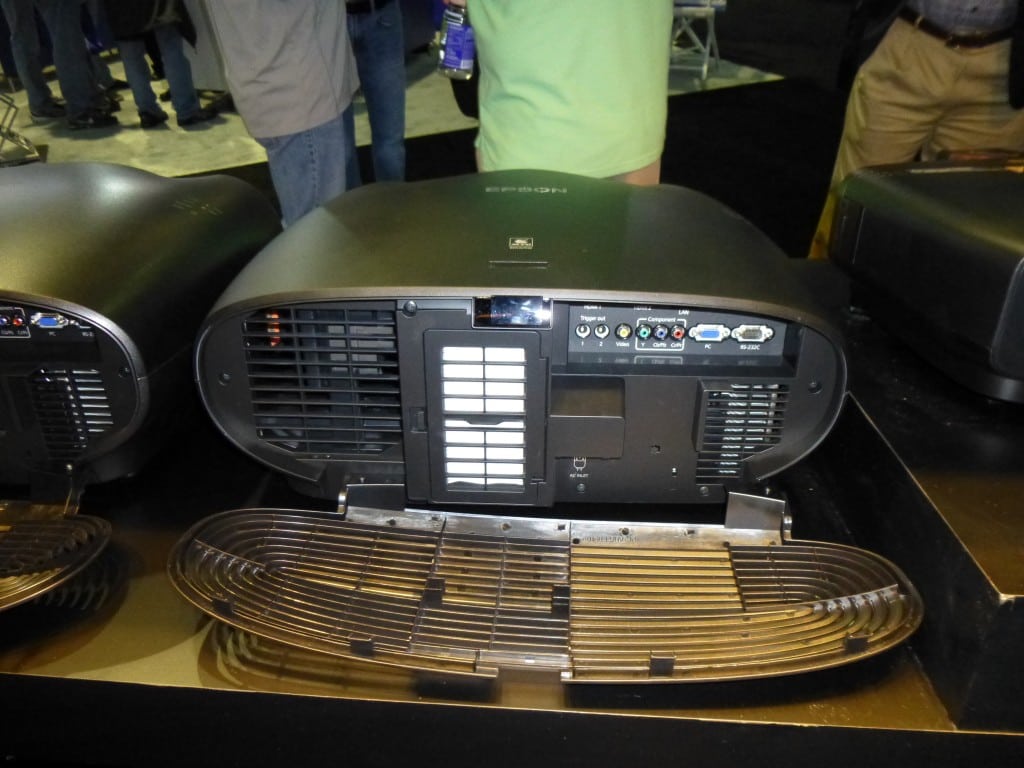
Epson LS9600 Rear Panel
And the following photo is a close-up of the connector panel of the LS10000.
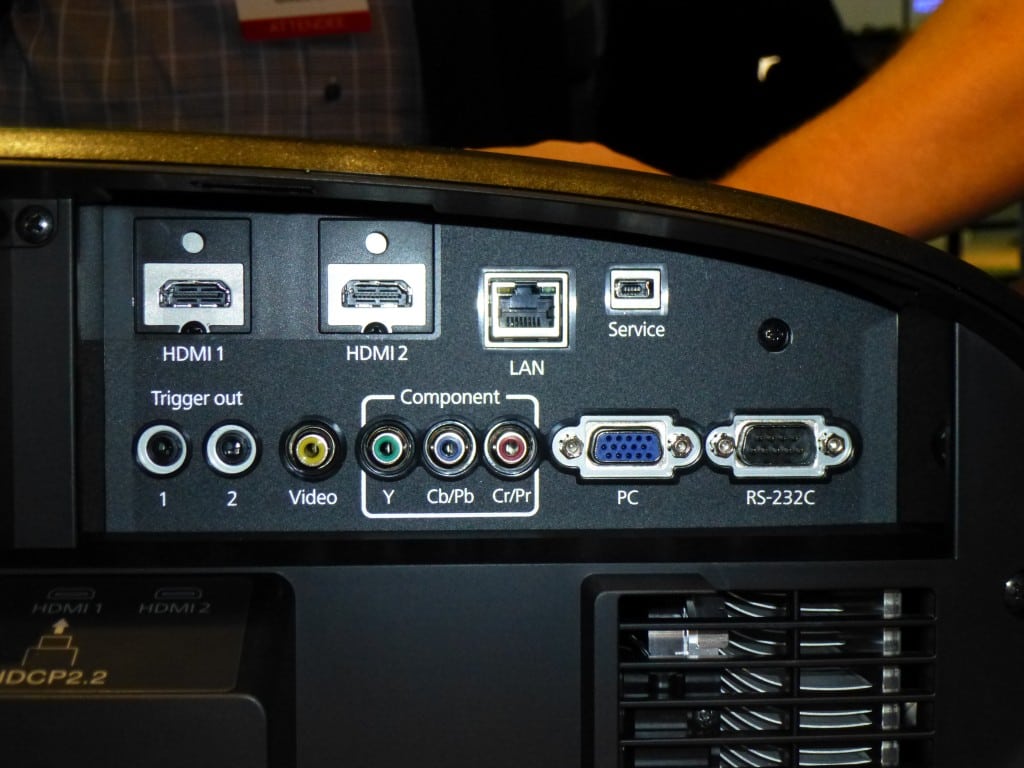
Epson LS10000 connector panel
I also asked about the upcoming firmware update for the 4030, 5030 and 6030 series of projectors that is being demo'ed at CEDIA on a 6030UB projector. The new firmware will be provided first to Epson projector dealers then a little later put on the Epson support web site for download by owners of these projectors. It is said the firmware update is nearly fool-proof as it is highly unlikely to "brick" a projector that is being updated. The improvements to the projector's image enhancement functions are substantial with this new firmware and all owners of these projectors should get the firmware installed once it is available.
Sony -
I posted some info on new Sony products in my Day-2 and got some additional clarifications today. The new 4K projector announced last week at the IFA show in Berlin (model VPL-VW300) may have a US version coming in 2015 but no firm decision has yet been made. Also the Sony 4K player that up until now has only worked with Sony brand UHD TVs and Projector will be unlocked through a firmware very soon to become compatible with any brand of 4K UHD TV or projector as long as it a HDMI 2.0 with HDCP 2.2 input.
Sony was demo'ing a dual stacked setup using two for their flagship 4K projectors, model VPL-VW1100es, with pixel level alignment of the two projected images. This would be useful for doubling the lumens output for use with larger screen sizes that could realistically be supported by the light output of just a one of these projectors.
Yamaha -
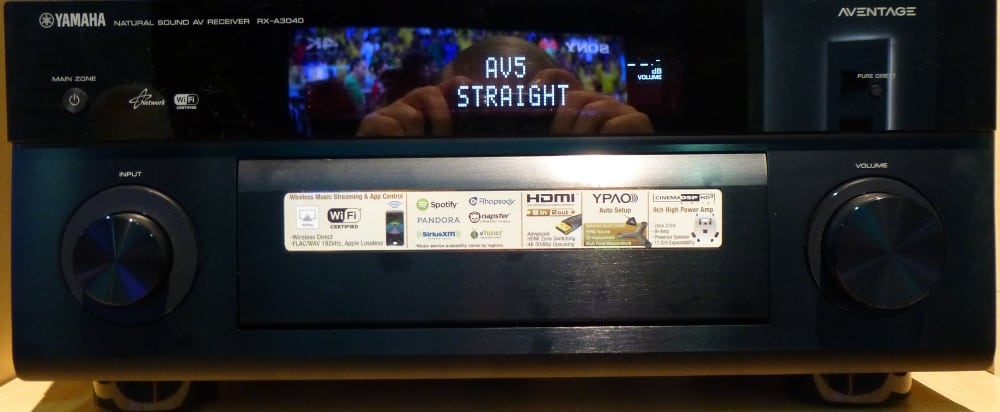
Yamaha RS-A3040
I stopped by the Yamaha booth and listened to their demo of the Dolby Atmos surround setup. Atmos is being added to some Blu-ray disc movie releases and the commercial version is already installed in several hundred movie theaters. Atmos encoded discs will add meta data to the existing Dolby TrueHD audio track and the meta data can be read by a new generation of AV receivers equipped to decode and process the Atmos object-oriented information. Existing Blu-ray players and AVRs will simply see the standard Dolby TrueHD information as usual and thus Atmos encoded Blu-ray discs are fully backward compatible with existing systems. Atmos supports many different speaker configurations with varying numbers of speakers and varying speaker locations. When conventional speakers are being used, a good starting point if already using a conventional 7.1 or 7.2 arrangement, would be to add two additional ceiling speakers toward the front of the room. While including ceiling speakers are not absolutely required with Atmos, adding these will get you a more accurate 3D sound field. For those customers not able, or willing, to install new ceiling speakers, Yamaha and other manufacturers are offering front speakers that have top firing drivers that bounce sound off of the ceiling to create the new front ceiling sound locations used by Atmos.
The Atmos enabled AVR will need amplification to support a minimum of 9 channels plus subwoofer line outputs when using ceiling speakers along with a conventional 7.1 or 7.2 speaker configuration is used (or when the front speakers equipped with the Atmos upward driver is included instead of actual ceiling speakers). The next step up from this Atmos configuration was what was being demonstrated by Yamaha at their booth. In the Yamaha demo they had a second pair of ceiling mounted speakers placed further back in the room providing 11 channels of audio (not counting the subwoofers). The short demo was effective in demonstrating the effectiveness of the Atmos setup at recreating complex, enveloping sound fields, but the listening environment in the Yamaha booth was far from ideal.
Yamaha earlier this summer announced two Atmos equipped AVRs that were on display at CEDIA. The RX-A3040 (pictured above), being the flagship model, was used for the demo. While both of these Yamaha models are equipped for 9.2 operation with 9 amplifier channels, only the RS-A3040 is expandable to 11.2 channel operation. The RS-A3040 is priced at $2199 and the RX-2040 at $1699 and are now available through authorized Yamaha audio dealers. One thing for Home Theater owners to be aware is the current Yamaha AVRs that come with HDMI 2.0 do not support HDCP 2.2 so they will not be compatible with the higher quality 4K/UHD video sources, including the upcoming Blu-ray 4K/UHD discs.
Denon & Marantz -
The D&M group includes both Denon and Marantz products and they put on a nice Atmos demo. They had a fully enclosed room with acoustic treatments and were using Marantz electronics. The demo was conducted by a Atmos manager from Dolby Labs. It was explained that the Atmos processing can work with standard 7.1 speaker arrangements but to start getting the full benefits adding ceiling speakers is desirable. The Atmos AVR or preamp/processor will need to be configured during setup so that the Atmos processing knows the physical location of each speaker and when it then is processing Atmos audio, it will attempt to place each individual sound in its intended position. The bottom line is the more speaker locations it has to work with, the more accurate the Atmos processing is able to place each individual sound at its intended location. From the 3 short video clips with Atmos audio they played in the demo, the results were very convincing. It's my understanding that the Denon and probably also the Marantz, AVR have the issue with their HDMI 2.0 inputs/output lacking support for HDCP 2.2. The 9.2 channel Denon AVR-X5200W is pictured below.
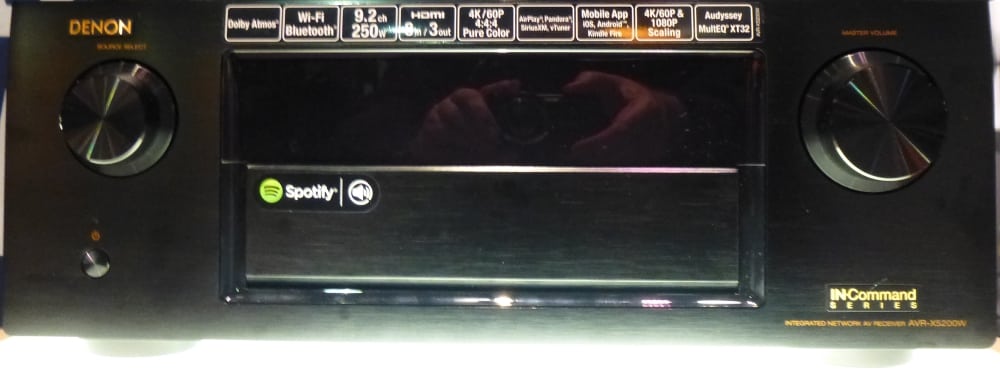 Onkyo/Integra
Onkyo/Integra -
Integra offers 4 AVRs plus a preamp/processor with varying levels of Atmos capability. Their pre/pro model DHC-80.6 includes support for 11.4 channel configuration, while the AVR models vary from 7 to 11 amplified channels and with 2 subwoofer line outputs. I did not get a Atmos demo at their booth. I did learn their AVRs support HDMI 2.0 with HDCP 2.2 inputs making then more-or-less future proof as they should be compatible with the upcoming Blu-ray 4K/UHD players.
Sim 2 -
They had a very small booth and with the only projector model on display of interest being the new Nero 3. It was a new low-end (for SIM2) model, but still expensive at $14,000. This is a single chip model that uses a LED light source to produce 1400 lumens. that Sim2 claims is equivalent to 2000 lumens from a UHP lamp based projector. Sim2 did not display their normal wide assortment of DLP projectors as in past years. I didn't get an opportunity to talk to their booth representative to discuss this new model in detail.
DarbeeVision -
They were showing their own standalone video enhances plus a few products from other manufactures that incorporated their enhancement processing. This was the first time I had seen the Galaxy GeForce GTX 750Ti Darbee Edition video graphic card for PCs (photo below). The card comes with 2 GB of DDR5 memory is sells fur under $300.
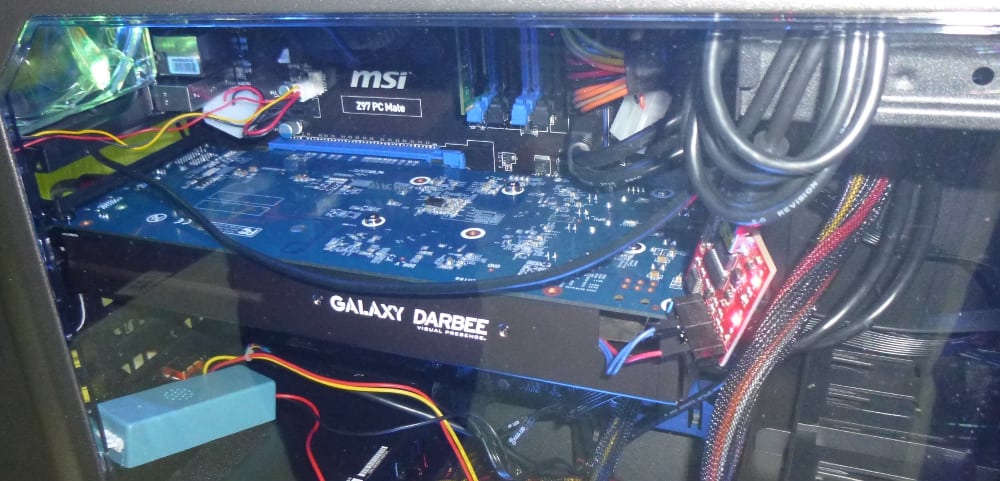
_________________________________________
<<<<<Read my Day 2 Blog<<<<<







